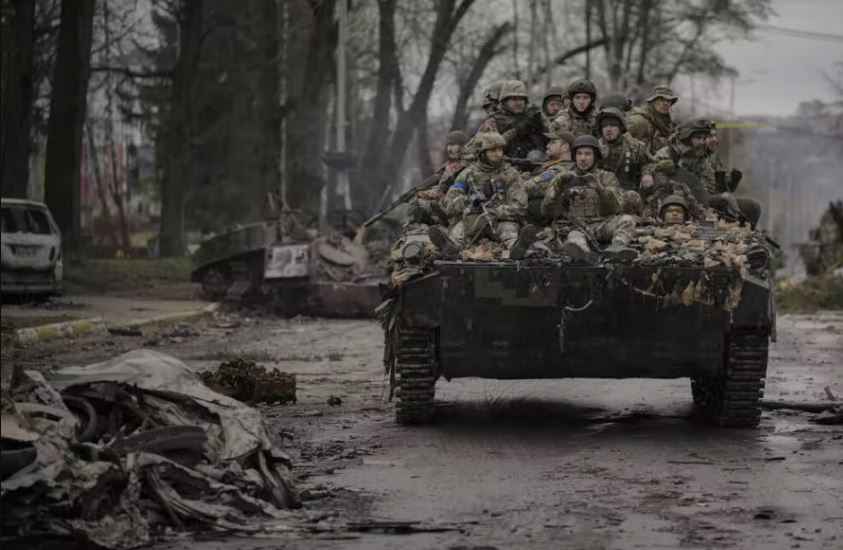Wars have been part of the history of mankind since its inception, determining the course of the world. Let’s see how war conflicts are classified according to their origin, scope, development, and military characteristics.
Throughout history, there have been multiple wars, all of them with different characteristics but showing common features that allow us to classify them into different types. Every war involves a confrontation between two or more parties that ends with the defeat of one of them and the death of a large part of the population involved.
The causes can be multiple such as religion, politics, economics, or territory. Apart from human losses, material goods are also affected, as well as food, animals, and even the climate and the environment.
There are different types of war according to the characteristics that show how the countries involved or the type of strategies they use, we differentiate between global, which involves many countries; civil, different sides of the same country face each other; biological, pathogens are used; guerrillas, brief and rapid confrontations; invasion, entry by force of the army of one country into the territory of another; nuclear, with weapons of mass destruction; holy, in the name of religion; and commercial, which entails trade barriers.
In this article, we will talk about the most relevant features of war. Likewise, we will mention some of the main types, mentioning their most outstanding characteristics.
What is meant by war?
War is a conflict between two groups of individuals or more. The confrontation may or may not be armed, but in any case, the purpose or intention is to be above the others, to defeat them. Thus the techniques used may be different.
When thinking of wars, the first thing that comes to mind are battles with weapons, but there can also be a confrontation, and opposition, between two groups without physical violence, only psychological dispute.
Although there may be different types of wars, they normally all have in common the intention of each side to impose itself on the other and the occurrence of losses, whether material or human, resulting in more or less radical changes.
We thus see how throughout history, continuously, there have been wars that have changed the course of events, each one adapting to the historical moment or reasons that move society. Next, we will mention the main types of wars that exist and what distinctive characteristics each one of them shows.
8 Types of War and Its Characteristics
-
Civil War
Civil war is characterized by the confrontation between two or more sides of the same state or country. Generally, the causes are political although they can also be religious, economic, or any issue that creates dispute. The intention, as we have already mentioned, is usually the attempt of one of the sides to impose itself on the other, showing the two very opposite characteristics.
Thus, it is common for one of the groups to rise against the other, which normally has power. It can also be linked to the intention of separation, of becoming independent, which shows a part of the country in the face of the refusal of the current government.
As in other wars, the consequences can be devastating, added to the fact that on this occasion the combatants are part of the same country, and may even be acquaintances or relatives, and often without having the necessary training or knowledge to fight, it is said, most are not military. Known examples of this type of war are the Spanish Civil War (1936-1939) and the United States War of Independence (1775-1783).
-
World War
The world war arises between different countries participating in the different continents, we thus see the magnitude of this conflict and the global consequences it will entail. The main powers of the world are involved and it is difficult for any country to remain neutral. The main reason, as we have already seen, is the search for the imposition of power by one of the countries.
Given the number of participating states and the fact that the battlefield is the whole world (Earth), the destruction and human losses are incalculable, requiring a long recovery period to return to normality. As we well know, throughout history there have been two world wars, the first from 1914 to 1918 with the triple force of France, the United Kingdom, and Russia prevailing, and the second from 1939 to 1945 with the victory of the Allies, the United Kingdom, France, Russia. and the United States, leaving much more dead than the first.
-
Holy-War
As we can deduce from the name, the holy war is the one carried out between two or more religious groups to impose themselves and affirm their religion as the only true one. They are usually led by the church or a religious leader, fighting on behalf of the god they believe in.
Thus, the formation of the sides, in this type of war, is by beliefs and not so much by territory or country. A well-known example of this type of warfare is the crusades promoted by the Catholic Church during the Middle Ages.
-
Invasion War
Invasive warfare is waged by the forcible entry of a country’s army into another territory to conquer them. Faced with the invasion attempt, the interrupted country will take defensive measures against the rival’s attack. We must highlight the need for the invading force to be external, since if not, we will not be able to consider this type of war as such.
Given the magnitude of the action and the time it may take, it is common for the attacking country to have planned strategies to achieve its objective and the attacked country tries to resist in any way trying to stop the advance of the enemy army.
There are different types of invasion depending on whether the attackers arrive by land, sea, or air. As examples of invasion, we can mention the one that happened in Poland by the Nazis in 1939 or that of Iraq by the United States in 2003.
5. Nuclear War
A nuclear war involves the use of nuclear weapons, weapons of mass destruction, which leads to the loss of many human lives, as well as fauna and flora, and the planet could end up destroyed. The activation of a war of this caliber would produce serious consequences on earth due to the radiation it gives off and the climate change it entails.
To date, no war of this type has occurred, since the countries that have the required weapons are aware of what the start of a nuclear war would mean, seeing not only the lives of many people in danger but also of the species. human. We must point out a nuclear attack the one carried out by the United States on the Japanese cities of Hiroshima and Nagasaki.
-
Trade War
The trade war supposes the imposition of barriers to free trade. In this case, the war is not so much linked to physical violence or armed conflict but more to the struggle to dominate trade and affect the export and sale of products from other countries, ultimately affecting the world economy.
It can be done in different ways, from blocking transportation, and preventing products from being distributed, to passing laws and dividing up areas of exploitation. An example of a trade war is the one that started between the United States and China in 2018.
-
Biological Warfare
Biological warfare uses pathogenic agents such as viruses or bacteria, or bioactive agents such as toxins, to sicken or kill people and animals or contaminate water or food. In this way, it is about generating and transmitting a more or less serious infectious disease that can lead to an epidemic.
During World War I, the German army used the bacteria “Bacillus anthracis” as a biological weapon. It is also known that armies such as the Mongolian or the Turkish used to throw corpses in the drinking water reserves of the enemies. Currently, it is suspected that there are countries that still keep biological weapons, specifically: Iran, China, Russia, North Korea, Syria, and Israel.
- Guerrilla Warfare
Guerrilla warfare is based on using a poor military strategy that consists of brief confrontations by armed civilian groups and a rapid withdrawal, using techniques such as ambushes, violent and surprise attacks; looting, taking other people’s property, or lightning wars with quick and forceful intervention.
Normally these strategies are used by smaller groups that face a larger army, which they cannot face directly, also helping them on many occasions the greater knowledge they have of the terrain, the territory since they live in it.
Examples of guerrilla warfare are those carried out in Spain during different historical periods, such as the fight of the Vascones (an ancient Hispanic native people) against Charlemagne.
See More: 7 Best War Movies you Should Watch
Follow Top and Trending on Google News and receive the latest alerts and the main news about apps, technology, beauty, entertainment, and all the top 10 related posts.



